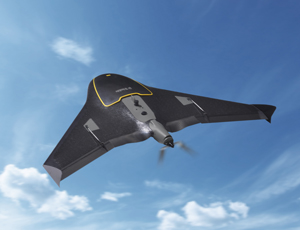

The Federal Aviation Administration on Dec. 10 issued five permits to four companies to fly unmanned aircraft for commecial purposes. It remains unclear how the permits might branch out.
“It’s available to us to be subcontractors with this, but our distribution channel is our strength,” says Todd Steiner, marketing director of geospatial imaging solutions at Trimble, which is the first fixed-wing manufacturer to get issued an exception. “Because we sell to customers as a manufacturer, it’s our expectation that there will be a way for us to leverage our exception to expedite one for our customers,” says Steiner. It seems there are plenty who would welcome the help.
Out of the 167 companies that applied, only 13 have been granted commercial exemption permits. Seven permits went to film and television companies, two went to oil companies in Alaska, two went to Woolpert Inc. and one permit went to each of the following: Trimble Navigation Ltd., VDOS Global LLC and Clayco Inc.
The permits are issued under Section 333 of the FAA Modernization and Reform Act of 2012, which finds that unmanned aircraft systems (UAS) do not need an FAA-issued certificate of air-worthiness because they do not pose a threat to national airspace users or national security. For Steiner, the allowances couldn’t have come sooner.
“We’ve been in a little bit of a standstill, not having full access,” says Steiner. The permit is just the first step in allowing Trimble to work the market more fully, instead of concentrating only on public companies, he says, observing, “We’ve had a lot of interest in just the past 24 hours.”
Terms of the permit still require drones to weigh less than 55 pounds and be operated by a private pilot that, at all times, keeps the vehicle in the line of sight.
Steiner says he looks for official UAS regulations any day now. “Could be before the end of the year or early 2015,” he says.



Post a comment to this article
Report Abusive Comment